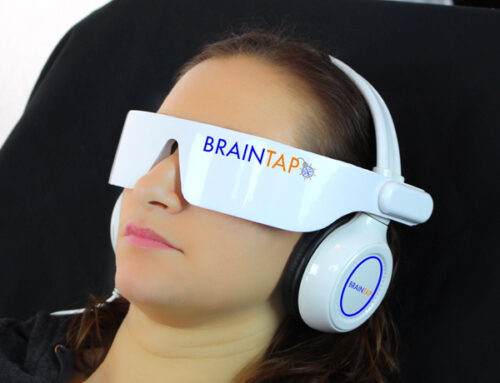The 12 Must-Do’s for a Successful School Year!
As millions of students are beginning a new school year, health, fitness and nutrition play a primary role to insure optimal learning and create abundant energy. Emphasis needs to be placed on providing our youth lifelong advice on sports training, injury prevention, spinal health and posture, healthy eating and hydration.
JUMPSTART THE SCHOOL YEAR WITH THESE 12 EASY FITNESS MUST-DO’S
- Eat healthy meals. Eating a well-balanced diet without skipping meals will help maintain an appropriate weight and decrease risk of developing diabetes and heart disease as one becomes an adult. Eliminate all trans fats which includes almost all fast foods. Serve a minimum of 5 portions of fresh fruits and vegetables daily (organic and raw when possible), complex carbohydrates such as whole grains and lean meats, fish (wild) and poultry. Food is vital for learning in school.
- Eating breakfast is for brain power. Breakfast will not only increase your overall energy, but also keep your blood sugar levels even and will reduce your cravings and overeating throughout the day. Think of breakfast as brain food that will help improve concentration and improve performance at school. It will prevent a mid-morning slump and reduce the tendency to eat higher calorie snacks.
In a published statement by Tufts University, a link was found between nutrition and cognitive development in children which recognized that “Children who participated in the School Breakfast Program were shown to have significantly higher standardized achievement test scores than eligible non-participants.”
- No time to eat breakfast? Consider these before school:
- Hard- boiled egg, whole grain bread and fruit
- Low fat cheese, fruit and low fat granola bar
- Whole wheat/grain English muffin or bread with natural almond butter and fruit
- Pre-cooked chicken/turkey sausage, whole wheat/grain bread and fruit
- Veggie patty, whole wheat/grain bread and fruit
- Fruit smoothie with variety fresh/frozen fruit, protein powder and plain non-fat yogurt
- Plain non-fat yogurt (Greek?) and/ or cottage cheese, add own fruit, seeds and whole/grain bread
- Whole wheat tortilla with cheese and fruit
- Keep kids active. Our children need at least an hour of physical activity daily. This includes playing outdoors, sports and calisthenics. Without regularly scheduled exercise, children will opt to watching excessive television, as well as playing video and computer games for lengthy periods of time. Although these activities are stimulating creativity and developing hand-eye coordination, they contribute nothing to a child’s level of fitness and increase stress on the spine. Joining school sports is an excellent way to gain heath and friends. More children over the last number of years suffer from back pain and headaches simply because they don’t get enough exercise.
- Setting healthy boundaries around electronic activities. Begin with a non-threatening simple conversation about what they have heard about online media usage to get them to think without defensiveness. Some school years start with this topic now themselves. Next, make some agreed upon limits to cell phone and texting usage. For example: no cell phones at dinner or certain other times of the day. Ask to be “friended” so you can periodically check for any concerns. As a family, designate a certain amount of time a day or one day a week where the whole family does offline games and other activities together. Plan a fun family trip with everyone engaged in the process and unplugging all electronics.
- Drink water. Hydration is a key factor in keeping your child’s muscles working properly and avoiding an injury. Teenage youth should drink about eight 8-ounce glasses of water per day. Younger youth should drink a minimum of five 8-ounce glasses per day. Carbonated beverages, juices and other sweet drinks are not a substitute. Sugar-sweetened drinks are the main culprits that add more sugar to our diets. On average, Americans eat about 22.2 teaspoons of sugar a day, which adds up to 355 calories per day, an increase of 19 percent since the year 1970. Ask your child to drink lots of water while at school.
- Take vitamins on a daily basis and avoid “trendy” supplements. A multi-vitamin and fish oil are of benefit for all our kids. To reduce the pain from contact sports one may want to consider: Vitamin C, Vitamin B and amino acids, Thiamine and Vitamin A. Kids under the age of 18, should avoid performance-enhancing supplements as creatine, but instead should ask their coach about weekly weight-training sessions. Keeping the mind sharp at school is the #1 goal.
- Preparing the young athlete for sports activities. It is vital for parents and coaches to help prepare their athletes’ body and learn how to protect them from sports-related injuries before they happen by receiving the proper warm up stretching and weight-lifting exercises. A slow jog, jumping rope and/or lifting small light weights, warming up all the major muscle groups before every practice, game or meet improves flexibility and reduces injury. All equipment should be fitted properly and be damage-free. At school, PE should cover some basic issues as well.
- What about soccer? During the past 25 years, soccer passed baseball as the most popular team sport in the United States. However, some youngsters are enduring mild to severe head traumas, neck and back injuries, headaches, dizziness, irritability and insomnia as a result of playing soccer, especially in “heading” the ball. “Heading” the ball is the deliberate use of the head to redirect the ball which has caused controversy over possible permanent head and body damage. Children should be given correct techniques from their coach at school to be safe and “heading” the ball should be held off until about 14-16 years old which is based on maturation and development of the spine. Additionally, smaller balls should be used for the younger player, as well as strict enforcement of the rules by the coach, padding of goal posts and use of mouth guards.
- Parents should encourage a broad spectrum of activities that include: skating, skiing, tennis, etc, to encourage development and movement of muscles, ligaments and joints throughout the whole body. Joining tennis, golf, or swimming at school can lead to a bright future later.
- If an injury occurs. Think RICE–Rest, Ice, Compression, and Elevation which is the honored protocol to follow. Apply the ice for about 20-minute every hour or so, until the swelling is down. After 20 minutes, ice will fatigue the blood vessels and cause a heat reaction that generally will increase swelling. Try having the child move the injured body part as soon as possible. If the pain persists and does not improve daily, is warm to the touch, the child begins to run a fever, or the pain seems out –of-proportion to the degree of trauma, consider taking your child to your doctor and/or chiropractor. If at school, see the nurse stat.
- Get plenty of sleep. A minimum of eight hours of rest per night is ideal for our youth. Lack of sleep can decrease performance in both at school and sports. When a child shows signs of irritability, sluggishness and/or loss of interest, it may indicate your child is fatigued.
EVERY CHILD IS DIFFERENT AND HAS UNIQUE NEEDS.
Our goal is to support our children and create a healthy space for them to enjoy optimal wellness. Kids are natural explorers as they run, fall and bounce around a lot. They are quite resilient as their ability to recover quickly from an injury is one of the great benefits of being young. However, one of these injuries may impact a child’s spine without causing any or little lasting pain and have a long-term effect on spinal muscles, ligaments and spinal nerve function. If muscles and ligaments are irritated or inflamed, the mechanical integrity of the spine is compromised. The short and long-term results may result in loss of range of motion in the neck, back or one or more joints, muscle pain, stiffness and tightness, headaches, numbness or tingling, frequent colds, gastrointestinal problems, allergies and asthma. Therefore, when it comes to vibrant health for you and your family, at home, school, or the office, preventing a problem is easier than treating a problem.
WHEN WAS THE LAST TIME YOU HAD YOUR CHILD’S SPINE CHECKED? SCHOOL TYPICALLY DOES NOT HAVE ANY SPINAL IMPLEMENTATIONS…
The health of your child’s spine and overall well-being needs to be taken very seriously. Keeping your child’s spine healthy will improve their posture, decrease their chance of injury, improve their overall health and help to avoid spinal problems as scoliosis. Our goal is to gently treat the entire neuromusculoskeletal system and provide advice on nutrition, posture and exercise, thereby helping stimulate one’s body’s natural healing process. Studies have shown that children who receive regular chiropractic care are less frequently ill, are able to concentrate better in school and are overall healthier. As parents and caregivers, isn’t this what we want for our kids?
Yours in Health,
Dr Iris Rosenfeld
25255 Cabot Rd Ste 110 Laguna Hills, Ca 92653
949-380-7215
[email protected] www.driris.com





